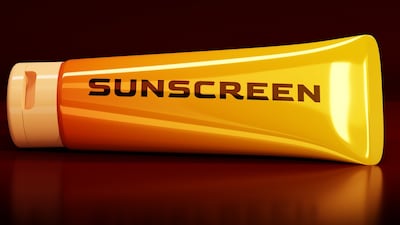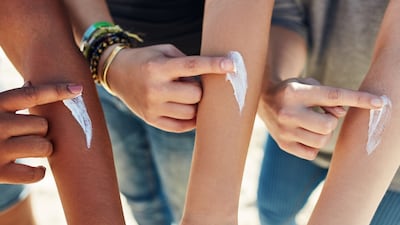
As temperatures soar, here are some of the best ways to protect your skin when spending time outdoors over the weekend
1) What’s the best way to protect my skin when spending time outdoors this weekend?
Skin specialists agree that it is wise not to expose your skin to direct sunlight between 11am and 3pm in warm weather. So the best advice is to stay out of the sun during these hours. It is recommended to apply sunscreen with Sun Protection Factor (SPF) 30 or higher before going outdoors. Sunscreen should be applied generously 30 minutes before going outside and then at least every two hours after that. Studies have shown that to protect skin from harmful ultraviolet (UV) rays, a layer of between 1.3 and 2 milligrams (mgs) of a sun screen is needed. The problem is that most people apply a much thinner layer, thus getting a much lower level of protection than they think they are getting.

"Most of us believe we tolerate the sun better than we actually do. And most of us aren't getting the SPF we think we are getting from sunscreen because we don't apply enough. It can be a good idea to put on more than one coat," says Dr Blaithin Moriarty, consultant dermatologist at St Vincent's University Hospital. Manufacturers of sunscreens rate their sun protection factor based on an application of 2mg of sunscreen per centimetre squared. This is equivalent to about a quarter of a teaspoon of sunscreen for an average face or a full shot glass sized amount for your whole body.
2) How do I know which sunscreen products are best from the wide variety of creams, lotions and sprays on sale?
Dr Moriarty says that sun creams are the best. “They give better coverage and are less likely to cause irritation or allergies because they have fewer ingredients,” she says. Spray on or roll on lotions are good for re-application - especially for children. But, ultimately, the best sunscreen is the one you’ll use regularly and always have at hand when you need it. Water-resistant sunscreen stays on a bit longer and should be used when exercising outdoors as well as when swimming. Regardless of which sunscreen you use, it’s crucial to rub it into your skin well after each application.
3) I know that it’s the UV light from the sun which is dangerous, but what’s the difference between UVA and UVB?
UVA rays cause premature ageing of the skin while UVB rays burn the skin. Both cause skin cancer. The SPF (Sun Protection Factor) is based on how much protection the product provides against UVB rays. UVA protection is indicated by the number of stars (five is the highest) or the EU standard (UVA in a circle) which is at least one third of the SPF value thus meeting EU recommendations. “The ideal sun cream has a SPF 50 and a five star or ultra high broad spectrum UVA rating. I’m not a fan of the long lasting sun blocks because while the UVB filters in them last well, the UVA filters don’t last as well,” says Dr Moriarty.
4) If I wear a wide brimmed hat, a long sleeve cotton top and long trousers, will I be sufficiently protected when sitting in the sun?
“Wearing clothing is the best way to protect your skin from the sun and sunscreen is second best,” says Dr Moriarty who adds that there is a wide variety of UV protective clothing now. You can check the UPV factor - 50 is the highest - on tops and shorts before you purchase. However, even when wearing long sleeved tops, trousers and hats, you must remember to put sunscreen on all areas of exposed skin such as your hands, face and feet if you are wearing sandals.

5) What is the best advice for babies and children?
Babies and children should be kept out of direct sunlight and well covered with a wide brimmed hat to protect their ears and neck as well as their head, a long sleeved cotton shirt and UV protection sunglasses (check for the CE mark). Sun screen should be applied to any areas of skin exposed to the sun and re-applied frequently and generously especially after swimming, perspiring or after drying with a towel. “One sun burn before the age of five doubles your risk of skin cancer,” says Dr Moriarty.
6) If the weather is cloudy, should I still apply sunscreen?

Many people believe that if they can't see the sun, they aren't at risk of damaging their skin but the sun's rays can penetrate through cloud and can burn your skin just as quickly. The key is to know the UV index. When the UV index is above three, which it is in Ireland from March to October, you have to protect yourself from the sun. "Even in the shade, you are getting 30 per cent of the sunlight so it's still important to wear sun protective clothing and sunscreen," says Dr Moriarty. The UV index is expected to be seven in many parts of Ireland this weekend.










